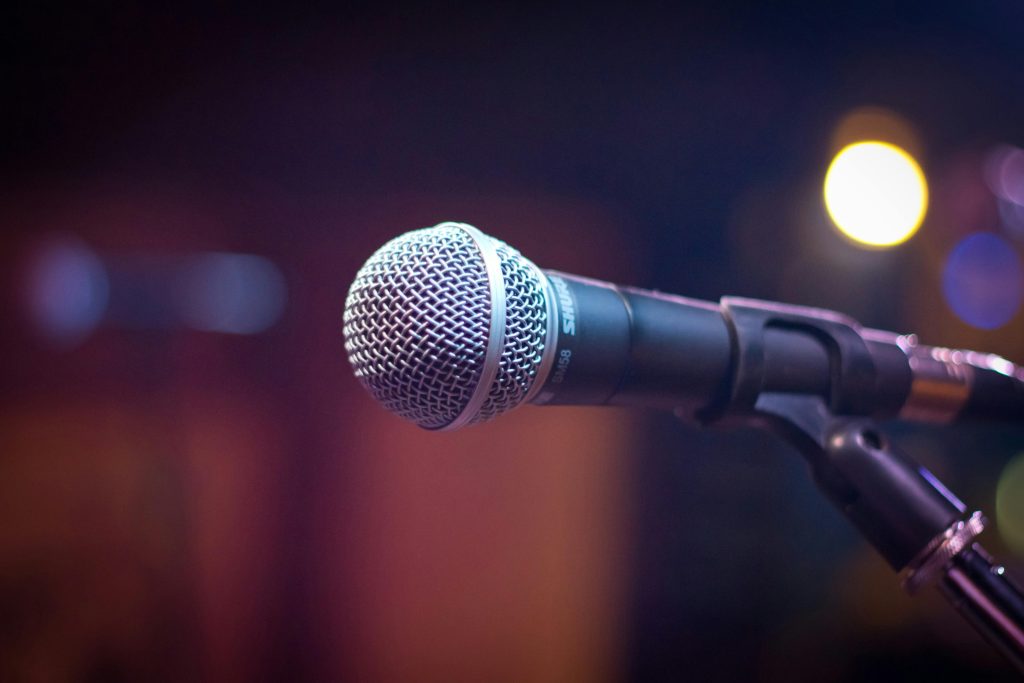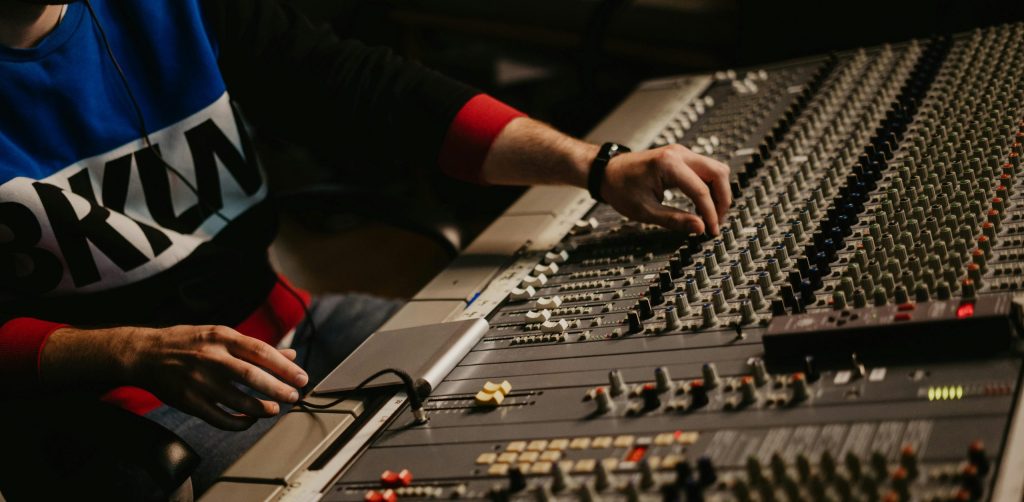Capture the Perfect Sound: How to Choose the Right Microphone for Your Home Studio

In the ever-evolving realm of home recording, choosing the right microphone can be a game changer for capturing the true spirit of your music. Understanding dynamic, condenser, and ribbon mics will empower you to elevate your tracks. Dynamic mics offer unmatched durability and versatility, condensers bring out crisp vocals and acoustics, while ribbon mics add a warm, vintage depth. With countless options available, knowing each mic’s specs, applications, and price points is key to finding your perfect match. Dive into this world with us as we explore how to enhance your creative vision. microphones, equipping you with the knowledge to elevate your home studio experience.
Understanding Microphone Types
Let’s take a look at microphones and explore the three main types you’ll encounter in your home studio journey. Each type has its unique characteristics, strengths, and ideal use cases.
Dynamic Microphones
Dynamic microphones are the workhorses of the audio world. Built tough and ready for action, they’re perfect for live performances and high-energy recording sessions.
These mics utilize a simple mechanism: a diaphragm attached to a coil of wire that moves within a magnetic field. This design makes them incredibly durable and resistant to moisture, which is why they’re often the go-to choice for outdoor events.
One of the biggest perks of dynamic mics is their ability to handle high sound pressure levels (SPLs) without distorting. This makes them ideal for recording loud sources like drum kits, guitar amps, and powerful vocalists. They’re also less sensitive to background noise, which can be invaluable in less-than-ideal recording environments.
Dynamic microphones are typically more affordable than their condenser and ribbon counterparts, making them an excellent starting point for beginners building their first home studio setup.
Condenser Microphones
Condenser microphones are the detail-oriented perfectionists of the microphone world, known for their exceptional sensitivity and ability to capture the nuances of a performance.
The magic of condenser mics lies in their electrically-charged diaphragm and backplate. This design allows them to respond quickly to sound waves, resulting in a clear, crisp audio capture. However, this sensitivity means they require phantom power, usually supplied by your audio interface or mixing console.
Condenser mics excel in capturing the full frequency range of vocals and acoustic instruments. They’re particularly adept at picking up the subtle overtones and harmonics that give instruments their unique character. This makes them a favorite for studio recordings where clarity and detail are paramount.
While they’re less rugged than dynamic mics, modern condenser microphones are built to withstand the rigors of regular studio use. Just remember to handle them with care and store them properly to ensure their longevity.
Ribbon Microphones
Ribbon microphones are the vintage souls of the microphone family, offering a warm, smooth sound often described as “natural” or “lifelike.”
The heart of a ribbon mic is a thin metal ribbon suspended between two magnets. This delicate setup gives ribbon mics their characteristic sound: rich in the mid-range, with a slight roll-off in the high frequencies. This makes them excellent for taming harsh sources or adding a touch of vintage warmth to digital recordings.
Traditionally known for their fragility, modern ribbon mics have made significant strides in durability. Still, they require careful handling and are best suited for controlled studio environments rather than live performances.
Ribbon mics truly shine on sources like brass instruments, electric guitars, and vocals that need a touch of smoothness. They’re also fantastic for room miking, capturing the ambiance of a space in a way that complements the main microphone.
Now that we’ve covered the basics of each microphone type, let’s explore how to match the right mic to your specific needs and recording environment.
Matching Microphone to Instrument
Choosing the right microphone for your instrument is crucial for capturing its true essence. Different instruments have unique characteristics that certain microphones are better equipped to handle.
For vocals, condenser microphones are often the top choice due to their ability to capture the nuances and subtleties of the human voice. Large-diaphragm condensers, in particular, are prized for their warm, full-bodied sound that flatters most vocalists.
When it comes to drums, dynamic microphones are typically used on the kick drum and snare due to their ability to handle high SPLs. Overhead cymbal mics are often small-diaphragm condensers to capture the shimmer and detail of the cymbals.
For acoustic guitars, small-diaphragm condensers are popular for their accurate, detailed sound. However, a large-diaphragm condenser can add a touch of warmth that suits some styles of playing.
Choosing the right microphone involves understanding your instrument’s unique voice and finding the mic that complements it best.
Assessing Your Recording Environment
Your recording space plays a crucial role in determining which microphone will work best for you. The acoustics of your room can significantly impact the quality of your recordings.
In untreated rooms with lots of reflections, a dynamic microphone might be your best bet. Its lower sensitivity means it’s less likely to pick up unwanted room noise. On the other hand, if you have a well-treated space, a condenser microphone can capture the full richness of your sound without unwanted artifacts.
Consider the noise level in your recording environment. If you’re in a bustling urban area or a home with thin walls, a dynamic microphone’s noise-rejecting properties can be a lifesaver. Conversely, in a quiet, controlled environment, you can take full advantage of a condenser or ribbon microphone’s sensitivity.
Remember, the goal is to capture the cleanest possible signal at the source. A great-sounding room with the right microphone can make a world of difference in your recordings.
Beyond the technical aspects, there are practical factors to consider when choosing a microphone for your home studio.
Budget-Friendly Options
Building a home studio doesn’t have to break the bank. There are plenty of quality microphones available at various price points.
For those just starting out, dynamic microphones offer great value. The Shure SM58, for instance, is an industry-standard vocal mic that’s both affordable and versatile. It’s equally at home on stage or in the studio.
In the condenser category, the Audio-Technica AT2020 is a popular entry-level option that delivers impressive sound quality for its price. It’s a great all-rounder for vocals and acoustic instruments.
For those ready to invest a bit more, the Rode NT1-A is a large-diaphragm condenser that offers professional-grade sound at a mid-range price point. It’s known for its low self-noise, making it ideal for home studio environments.
Remember, a higher price doesn’t always mean better sound. The key is finding a microphone that suits your specific needs and recording style.
Long-Term Durability and Care
Investing in a microphone is just the beginning. Proper care and maintenance can significantly extend the life of your equipment.
Dynamic microphones are generally the most rugged and require the least maintenance. They can handle drops, extreme temperatures, and high humidity better than other types. Regular cleaning of the grille to remove dust and debris is usually sufficient.
Condenser microphones, while more delicate, are built to withstand normal studio use. However, they’re sensitive to moisture and extreme temperatures. Store them in a dry place and use a pop filter to protect the capsule from saliva during vocal recordings.
Ribbon microphones, especially vintage models, require the most care. Avoid exposing them to strong air currents (like from a fan or air conditioner) as this can damage the ribbon. Modern ribbon mics are more robust but still benefit from gentle handling.
For all microphones:
-
Always use a shock mount to reduce handling noise and protect from accidental bumps.
-
Store in a cool, dry place when not in use.
-
Use the provided case or a padded bag for transportation.
-
Regularly check cables and connections for wear and tear.
With proper care, a quality microphone can be a reliable tool in your home studio for many years to come.
Share this blog
Related Blogs
-
Josh Reid










